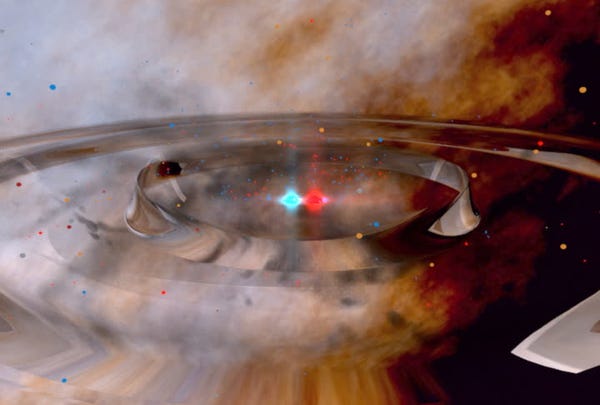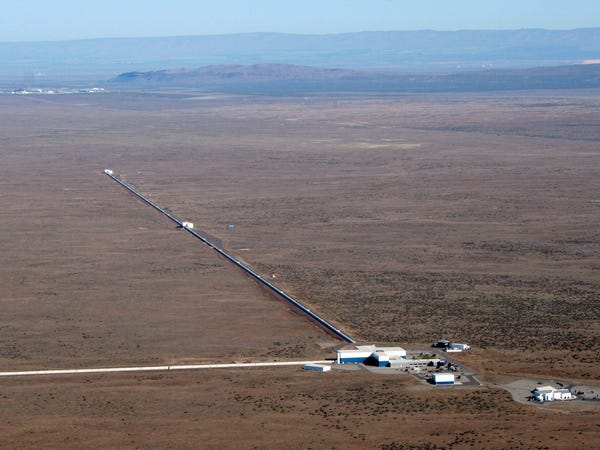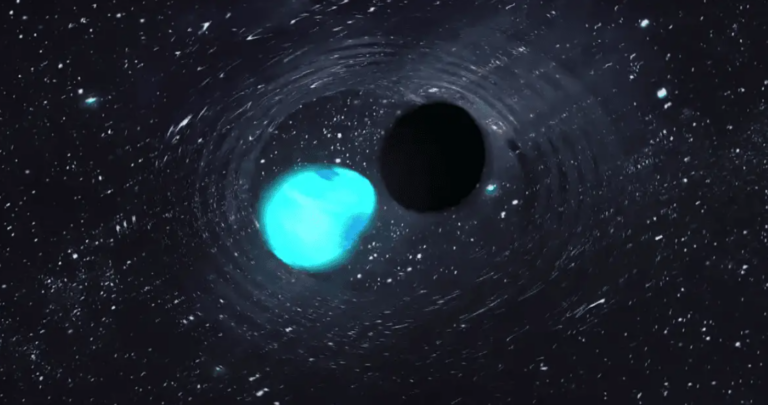Black Hole Swallows Neutron Star for the First Time, Creating Ripples in Space and Time
Researchers may have found the black hole and a neutron star collision that happened about one billion years ago and thus produced gravitational waves. Such a drastic phenomenon might have created vibrations in time and space which were noticed by LIGO in the USA and Virgo in Italy.
This would, if confirmed, mark the third recorded detection of gravitational waves with earlier observations being black hole and neutron star mergers. Einstein’s gravitational wave theory started in 1915, but the real deal occurred in 2015 a century after his prediction.
A New Era in Capturing Gravitational Waves
Gravitational waves were considered undetectable because of the Earth’s background noise but they were less subtle than that. Nevertheless, LIGO in 2015, successfully detected waves from the collision of two black holes which are 1.3 billion light-years away, proving Einstein’s general relativity theory. Back in 2017, LIGO and Virgo received one more event, black holes merger gravitational waves, collision of two neutron stars. If a potential third event involving a neutron star merging with a black hole which would be a crucial step in gravitational wave research completing the whole expected ‘trinity’ of cosmic collisions was discovered, then it will geminate a trio in realizing the cosmic collisions expected in research.

The black holes exert a strong gravitational force even that light cannot escape from them which is why scientists are now carrying out further research to confirm the finding of the X-ray or ultraviolet light which would have been left over from the neutron star. In case the neutron star survived the first phase of the merger, it could have possibly revealed visible light before being entirely devoured, which would provide conclusive proof of the collision.
New Insights and Theories
This recent event has not only been noteworthy for its infrequency but also because of the enigma surrounding the identity of the object that merged with the black hole. Although scientists think it is a neutron star, there is still a chance that it is a black hole that is surprisingly ‘light’—one that is less massive than any that have been documented before. This would be a revolutionary finding, giving rise to a new type of black holes and the current theories about their formation would be questioned.

The task of detecting gravitational waves is a truly difficult one. Instruments such as LIGO and Virgo often pick out background noise that can mistakenly be taken for real signals. An alleged collision of a neutron star and a black hole was previously found to be a false alarm. Nevertheless, scientists still trust in the success of this recent detection as the strength of the signal suggests it’s most probably not mere background noise. The chance of such a blunder happening is said to be less than once in a period longer than the universe’s age, thus this event becomes a strong candidate for being actual gravitational waves.

On the other hand, researchers improve their techniques and continue the search for evidence, this potential finding gives a bewitching view of the immense forces that shape the universe. No matter whether it confirms a neutron star or disclose a new type of black hole, this discovery is bound to broaden our knowledge concerning black holes, neutron stars, and the very nature of space-time.
Do not forget to share your opinion with us to provide you with the best posts !




0 Comments